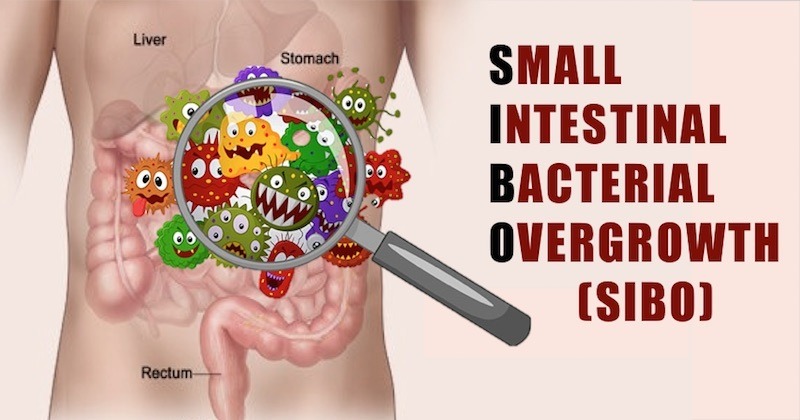If you read around online in the integrative, functional medicine, and/or digestive health space, you may have encountered this acronym: SIBO (usually pronounced “seebow”), which is easy-speak for small intestinal bacterial overgrowth … no wonder there’s a short form!
SIBO can cause many gut related symptoms ranging from abdominal bloating, belching, gas, flatulence, cramps, diarrhea, and constipation. If you’ve ever been told you have IBS or “irritable bowel syndrome”, you’ll likely recognize these symptoms as common in the IBS sufferer. In fact, SIBO is thought to actually be the cause of IBS in up to as many as 84% of people who are given a diagnosis of Irritable Bowel Syndrome! Until this was understood, doctors would often tell their patients with IBS that there really wasn’t a known etiology, which can be very frustrating when you’re miserable with abdominal discomforts and would like to know why you have them.
So, let’s dive in to just how one might acquire this bacterial overgrowth in the first place, and most importantly, what can be done about it?? Normally, we have the vast majority of our microbiome, or our resident microbe population, living in the large intestine, which is just at the very end of our digestive tract, composing about the final 5 feet of the “inner tube of life” that goes from mouth to anus. In contrast, the small intestine, which goes from the stomach to the beginning of the large intestine is about 22 feet long and under healthy circumstances, is relatively sterile of this rich and complex microbial content.
However, sometimes the bacteria that normally live in the large intestine migrate upward through an opening that normally is a one way valve going the other way ~ the ileocecal valve. When this valve opens and allows these bacteria from the large intestine to move upward into the small intestine where they don’t belong, this is the beginning of trouble. The bacteria start to ferment foods, especially certain carbohydrates, that are coming from the stomach, and when all that bubbling and fermentation happens, it forms gasses, which are the start of all those nasty symptoms.
Until recently we didn’t really have a good way to test for SIBO because that part of the body isn’t easily accessed in a non-invasive way, but now there’s an easy test to see if you have SIBO that you can do yourself, right from home! Since these bacteria that overgrow in your small intestine are busy fermenting the foods you’re eating, when they do, they produce hydrogen and/or methane gas in various amounts. Those gasses can be measured and a diagnosis made. Pretty cool, huh?
Even cooler, the test is just a breath test! Those gasses will come out in your breath after you drink a small amount of a specific solution and breathe into a little tube and bag apparatus several times over a couple of hours. You’ll need to eat a special low fiber diet for a day and then fast for 12 hours, just a little longer than overnight, then you do the breathing regimen, package up your kit and send it off to the lab where it will be analyzed and the gasses graphed out on a chart. Once you do that, you’ll be able to find out if your uncomfortable belly symptoms are due to SIBO!
If you do have SIBO, there is a several pronged approach to eradicate the bad bacteria with anti-microbial agents, a special diet and then followed by taking something called a pro-kinetic agent, that helps to keep things moving in a downward motion so the bacteria aren’t likely to take up residence in the wrong part of your gut in the future. If you have the kinds of symptoms mentioned above, do consider getting yourself tested for SIBO at Forum Health Akron you could finally get some well deserved relief from those bothersome, inconvenient and often painful gut issues!



